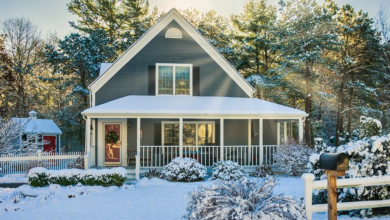Wood, Vinyl, or Metal? A Guide to Fence Material Options

Choosing the right material for your fence can seem like a daunting task. Wood, vinyl, and metal each have advantages and disadvantages. Whether your priority is style, durability, or cost, understanding these materials will help you make an informed decision. Below is a comprehensive guide to help you determine which fence material is best suited to your needs.
Wood Fencing
Benefits of Wood Fencing
Wood has been a classic fencing choice for decades, valued for its natural beauty and versatility. It can be stained or painted in a wide range of colors, allowing homeowners to customize the look of their fence to match their landscape. Wood fencing is also available in many styles, from traditional picket fences to more modern horizontal slats, making it a flexible option for design.
Wood is also relatively affordable upfront, making it an attractive option for those on a budget. Additionally, it’s easy to repair since individual planks, posts, or panels can be replaced as needed.
Drawbacks of Wood Fencing
While wood is a beautiful option, it requires significant maintenance to keep it in good condition. Regular staining, sealing, or painting is needed to prevent moisture damage, warping, and rotting. Termite infestations can pose another challenge, especially in humid climates.
The lifespan of a wood fence tends to be shorter than vinyl or metal alternatives, often lasting around 10–15 years, depending on the quality of the wood and upkeep. If you’re looking for less maintenance-intensive solutions, wood may not be your first choice.
Ideal Use Cases
Wood is best suited for those who prioritize aesthetic appeal and are willing to invest time in its maintenance. Choose wood if you desire a natural and customizable look for your property.
Vinyl Fencing
Benefits of Vinyl Fencing
Vinyl fencing is a popular low-maintenance alternative to wood. It doesn’t require painting, sealing, or staining, and it resists rotting, insect damage, and fading. Modern vinyl fences come in a variety of colors and textures, some of which mimic the look of real wood.
Durability is another major advantage of vinyl. Unlike wood, it doesn’t splinter or warp, and it can withstand harsh weather conditions, including heavy rain and direct sunlight. Properly installed vinyl fences can last 20–30 years or more with little effort.
Drawbacks of Vinyl Fencing
The primary downside to vinyl is the higher initial cost. It tends to be more expensive than wood at the time of purchase, which can be a barrier for homeowners on tight budgets. Additionally, vinyl may not be as strong as metal fencing and could crack under heavy impact.
Ideal Use Cases
Vinyl is a great choice for those who value durability and minimal maintenance. If you live in an area with challenging weather or simply want a fence that requires little upkeep, vinyl is worth considering.
Metal Fencing
Benefits of Metal Fencing
Metal fences, particularly aluminum and wrought iron options, are known for their durability and strength. Once installed, they can last for decades with minimal issues. They are resistant to pests, rot, and weather-related damage, making them a long-term fencing solution.
Metal fences also offer a sleek, upscale appearance, often lending a sophisticated or industrial look to a property. Their open designs provide security without completely blocking views, which can be an advantage for front yards or areas where you don’t want to obstruct sightlines.
See also Building More Than a House: Crafting a True Home with a Custom Build
Drawbacks of Metal Fencing
Metal fences can be costly to purchase and install. Wrought iron, for example, is one of the most expensive fencing materials available. Another potential downside is that some metals, like steel, may be prone to rust if not properly treated or maintained.
Some homeowners may also find the industrial aesthetic less appealing, depending on the overall design of their property.
Ideal Use Cases
Metal fences are ideal for those who prioritize strength, security, and an elegant appearance. If you’re willing to spend more for a long-term investment, metal is an excellent choice.
Considerations for Choosing the Right Fence
When deciding on the best fence material, think about your specific needs. Ask yourself the following questions:
- How much maintenance am I willing to commit to?
- What is my budget for both installation and long-term upkeep?
- Do I want my fence to provide privacy, security, or both?
Factors such as your property size, local weather patterns, and intended use will also influence your decision. Homeowners planning other outdoor upgrades, such as a composite decking installation in Richmond, may choose a material that harmonizes with those projects.
Summary and Recommendation
Wood, vinyl, and metal fencing each have unique benefits and drawbacks. Wood delivers timeless charm but demands regular upkeep and has a shorter lifespan. Vinyl offers low maintenance and impressive durability but comes at a higher upfront cost. Metal fences, while strong and visually striking, may require the largest investment.
Ultimately, your choice will depend on your priorities. If you prioritize aesthetics and customization, wood might be your best option. If low maintenance and longevity are your focus, vinyl stands out. For superior strength and an elegant look, metal fencing is hard to beat. Please take time to assess your needs before making your decision, making sure your fence is enhanced both the functionality and appearance of your property.





